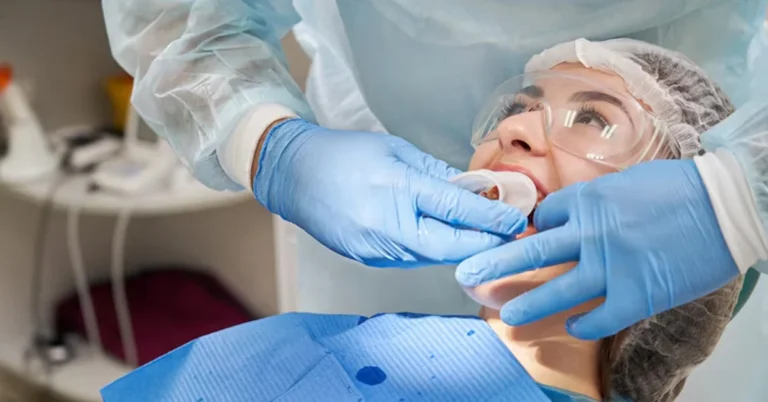Dental treatments play a crucial role in maintaining oral health, whether they involve routine procedures or more complex interventions. Understanding the healing process after dental treatment is essential for ensuring a smooth recovery and avoiding complications. Understanding the signs of normal healing and recognizing potential complications can help prevent unnecessary discomfort and long-term oral health issues. Healing is a natural process, and with the right care, most people can return to their daily routines quickly.
Initial Recovery Phase
The first few hours after dental treatment are critical for proper healing. Patients can experience numbness due to local anesthesia, which can take a few hours to wear off. During this time, it is essential to avoid eating or drinking anything too hot to prevent accidental burns or injuries.
Swelling is another common symptom that occurs after dental treatments, especially after surgical procedures. Applying an ice pack to the outside of the face can help reduce swelling and provide relief. It is essential to avoid touching or irritating the treated area, as this can interfere with the healing process.
Managing Pain and Discomfort
Pain and discomfort are natural parts of the healing process after a dental treatment. The severity of pain can vary depending on the type of procedure, but most discomfort can be managed with over-the-counter pain relievers. Dentists can also prescribe medications for more extensive procedures to help ease the recovery process.
Sensitivity in the treated area can last for a few days, and consuming soft foods can help prevent unnecessary irritation. Avoiding extremely hot, cold, or spicy foods can prevent discomfort and promote healing. Some people can experience minor headaches or jaw pain, especially after treatments that involve extensive dental work. Applying a warm compress to the jaw can help relax the muscles and ease tension.
Oral Hygiene During Recovery
Maintaining oral hygiene is essential during the healing process, but it is important to be gentle to avoid disturbing the treated area. Brushing and flossing should be done carefully, especially near sensitive areas. Using a soft-bristled toothbrush and avoiding vigorous brushing can prevent irritation. Rinsing the mouth with a mild saline solution or an antiseptic mouthwash can help keep the area clean and reduce the risk of infection.
Sticking to a proper oral hygiene routine can prevent complications and promote faster healing. Drinking plenty of water and avoiding sugary or acidic foods can also help protect the teeth and gums. In some cases, dentists can recommend using a medicated rinse or specific oral care products to aid the healing process.
Dietary Considerations for Faster Healing
Eating the right foods can play a significant role in the healing process after dental treatments. Soft foods such as yogurt, mashed potatoes, and smoothies are gentle on the teeth and gums, making them ideal for the initial recovery phase. Avoiding hard, crunchy, or sticky foods can help prevent irritation and protect the treated area.
Drinking plenty of water is also essential for keeping the mouth hydrated and flushing out bacteria. Avoiding carbonated drinks and acidic beverages can help prevent irritation in the treated area. Some dental procedures can require patients to avoid using straws, as the suction can disrupt healing. Planning meals that are easy to eat and nutritious can make the recovery period more comfortable.
Signs of Normal Healing and Potential Complications
To ensure a smooth recovery, it’s important to distinguish between normal healing and potential complications. Mild swelling, discomfort, and sensitivity are common after a dental procedure and should gradually subside. The formation of a protective blood clot following certain treatments is a positive indicator of proper healing.
However, persistent swelling, fever, or a foul taste in the mouth may signal an infection requiring prompt attention. This can lead to significant pain and hinder the healing process. For guidance on managing potential complications, consult a knowledgeable tooth extraction expert in Sacramento. Monitoring your symptoms and seeking professional advice for any unusual occurrences can prevent long-term oral health problems.
Conclusion
Healing after dental treatments is a natural process that requires patience and proper care. Understanding what to expect during recovery can help manage discomfort and prevent complications. Every individual’s healing experience can be different, but following professional advice and maintaining good oral hygiene can promote a smooth recovery. Managing pain, eating the right foods, and recognizing signs of normal healing can all contribute to a faster and more comfortable process. Taking preventive measures and maintaining regular dental visits can ensure long-term oral health.

